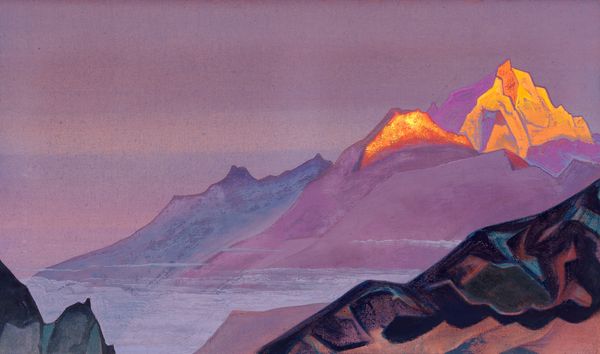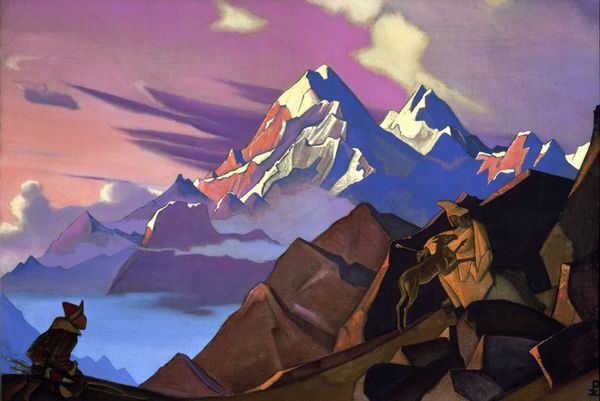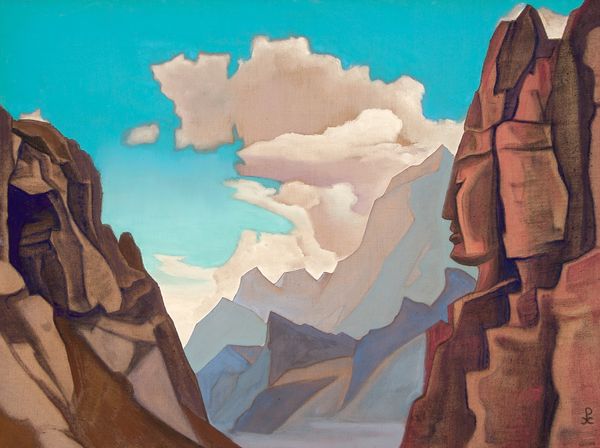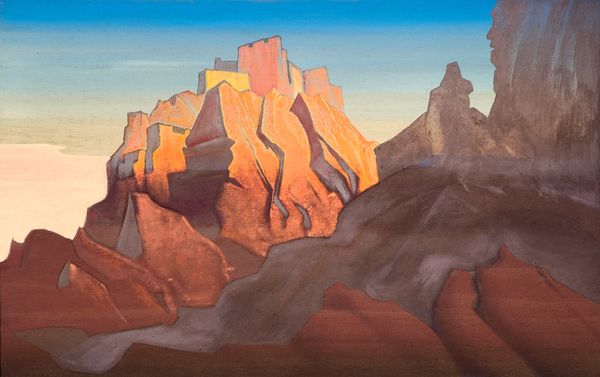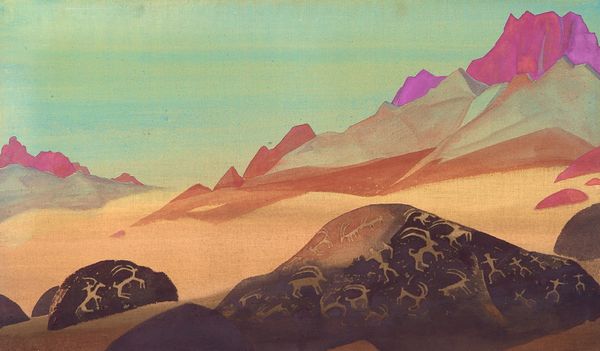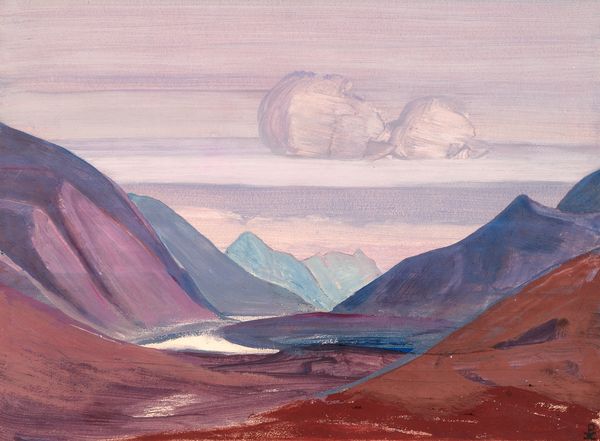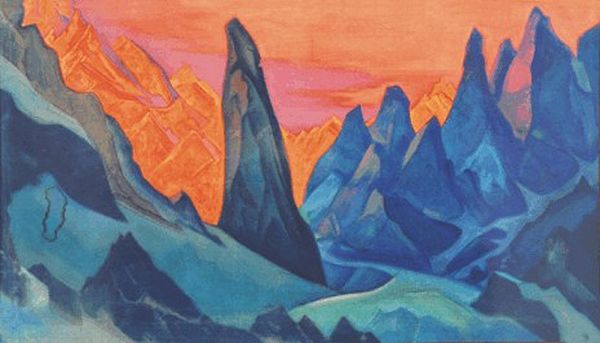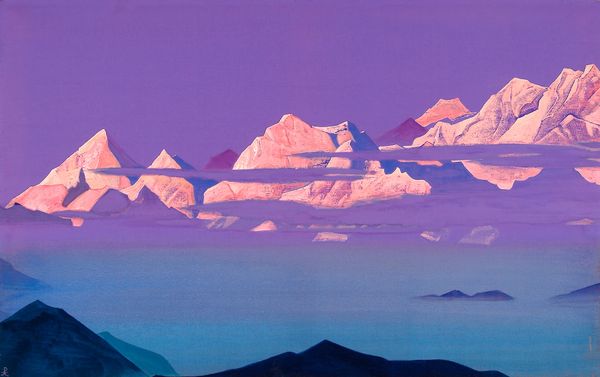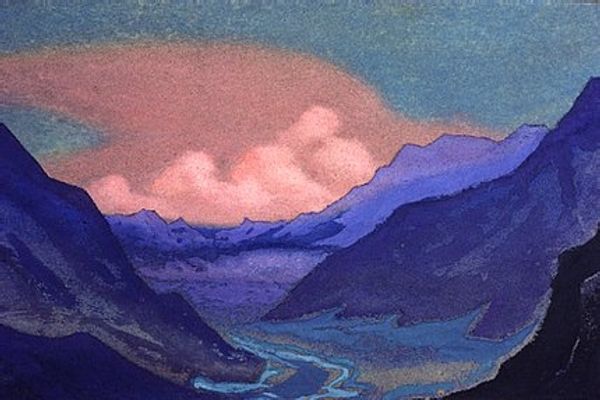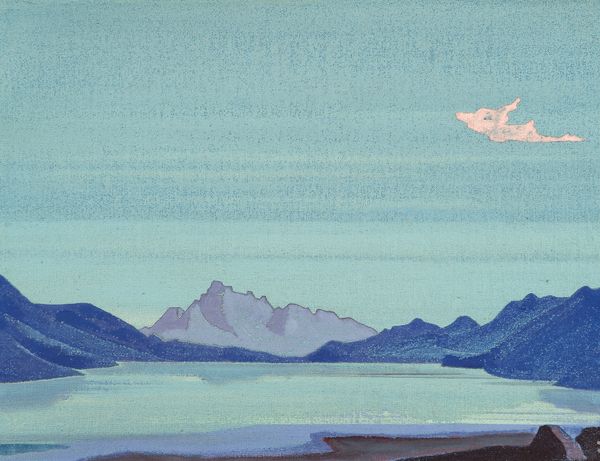
Maitreya the Conqueror 1926
0:00
0:00
nicholasroerich
Nizhny Novgorod State Museum of Fine Arts , Nizhny Novgorod, Russia
Copyright: Public domain
Curator: This compelling work before us, crafted by Nicholas Roerich in 1926, is titled "Maitreya the Conqueror." Editor: It's strikingly…ethereal. The palette, those lavender mountains against the fiery sky, and the imposing figure carved into the rockface – it all feels incredibly distant and mythical. Curator: Indeed. Roerich's deep interest in Eastern spirituality is very present here. His works from this period frequently portray landscapes imbued with religious or philosophical meaning, often touching on Buddhism and Theosophy, significant influences of the early 20th century. We see the cultural preoccupation with spiritual renewal that defines a segment of the European avant-garde following the Great War. Editor: Absolutely, and that massive rock carving clearly symbolizes permanence and the enduring presence of Maitreya. Notice how the supplicant figure at the base directs our gaze upwards. It’s not just a depiction of a landscape; it's an invocation. That upraised hand – its so simple, so familiar across time and cultures. A basic symbol for prayer or calling out to some other thing beyond this. Curator: The landscape is crucial; the Himalayas held a powerful place in Roerich’s vision. It’s believed that the “New Era” would begin in the East, with the Himalayas serving as the spiritual nexus for a new stage of human evolution. Roerich became an ambassador of that utopian spiritual hope, trying to promote a banner of peace, for unifying cultures around the globe. Editor: So "the Conqueror" in the title, it's about more than earthly conquest? More about inner triumph, maybe? Given the soft coloration. I find something calming. Maybe there is less conquer and more... embracing? The lack of strong black line really enforces that mood, especially with those looming, churning pink and violet clouds. Curator: Interesting point. Roerich himself saw Maitreya as the bringer of a new age, of goodness and light, through knowledge and beauty. This aligned him with that whole social and spiritual transformation sought through international cultural projects during the interwar era, though some viewed his vision with suspicion. Editor: And visually, you can see Roerich's hopefulness, even through his very deliberate symbol choices and imagery. Makes me reflect on our continuing need to see past immediate events. Curator: Precisely. “Maitreya the Conqueror” is more than just paint on canvas. It’s an historical document embodying hopes and beliefs still very relevant today. Editor: An allegorical glimpse into our persistent desire to see hope on the horizon. Thank you.
Comments
No comments
Be the first to comment and join the conversation on the ultimate creative platform.
